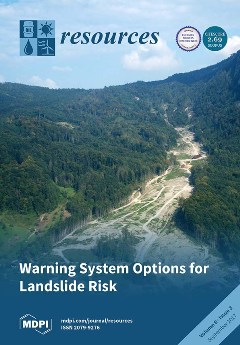The resource budget of Earth is limited. Rare-earth elements (REEs) are used across the world by society on a daily basis yet several of these elements have <2500 years of reserves left, based on current demand, mining operations, and technologies. With an increasing
[...] Read more.
The resource budget of Earth is limited. Rare-earth elements (REEs) are used across the world by society on a daily basis yet several of these elements have <2500 years of reserves left, based on current demand, mining operations, and technologies. With an increasing population, exploration of potential extraterrestrial REE resources is inevitable, with the Earth’s Moon being a logical first target. Following lunar differentiation at ~4.50–4.45 Ga, a late-stage (after ~99% solidification) residual liquid enriched in Potassium (K), Rare-earth elements (REE), and Phosphorus (P), (or “KREEP”) formed. Today, the KREEP-rich region underlies the Oceanus Procellarum and Imbrium Basin region on the lunar near-side (the Procellarum KREEP Terrain, PKT) and has been tentatively estimated at preserving 2.2 × 10
8 km
3 of KREEP-rich lithologies. The majority of lunar samples (Apollo, Luna, or meteoritic samples) contain REE-bearing minerals as trace phases, e.g., apatite and/or merrillite, with merrillite potentially contributing up to 3% of the PKT. Other lunar REE-bearing lunar phases include monazite, yittrobetafite (up to 94,500 ppm yttrium), and tranquillityite (up to 4.6 wt % yttrium, up to 0.25 wt % neodymium), however, lunar sample REE abundances are low compared to terrestrial ores. At present, there is no geological, mineralogical, or chemical evidence to support REEs being present on the Moon in concentrations that would permit their classification as ores. However, the PKT region has not yet been mapped at high resolution, and certainly has the potential to yield higher REE concentrations at local scales (<10s of kms). Future lunar exploration and mapping efforts may therefore reveal new REE deposits. Beyond the Moon, Mars and other extraterrestrial materials are host to REEs in apatite, chevkinite-perrierite, merrillite, whitlockite, and xenotime. These phases are relatively minor components of the meteorites studied to date, constituting <0.6% of the total sample. Nonetheless, they dominate a samples REE budget with their abundances typically 1–2 orders of magnitude enriched relative to their host rock. As with the Moon, though phases which host REEs have been identified, no extraterrestrial REE resource, or ore, has been identified yet. At present extraterrestrial materials are therefore not suitable REE-mining targets. However, they are host to other resources that will likely be fundamental to the future of space exploration and support the development of in situ resource utilization, for example: metals (Fe, Al, Mg, PGEs) and water.
Full article





